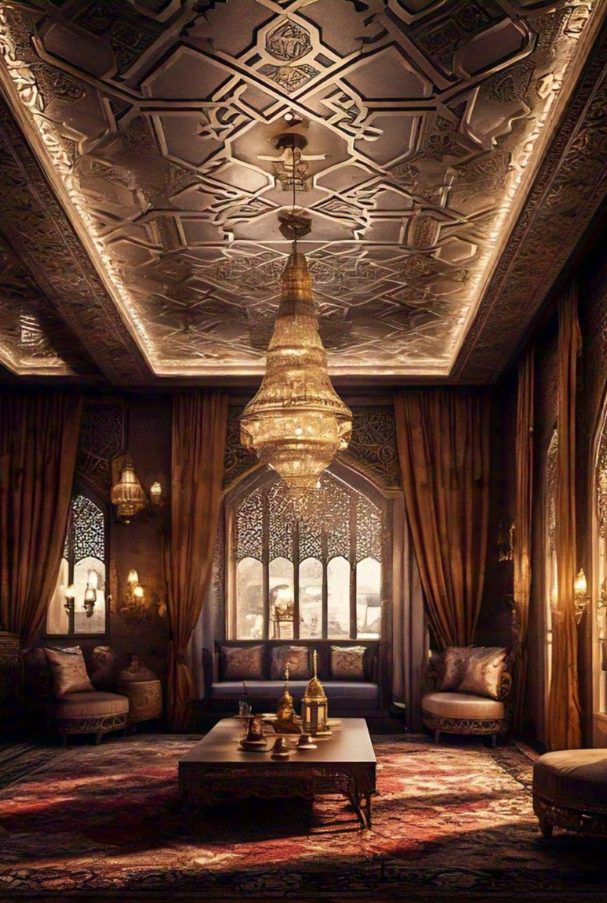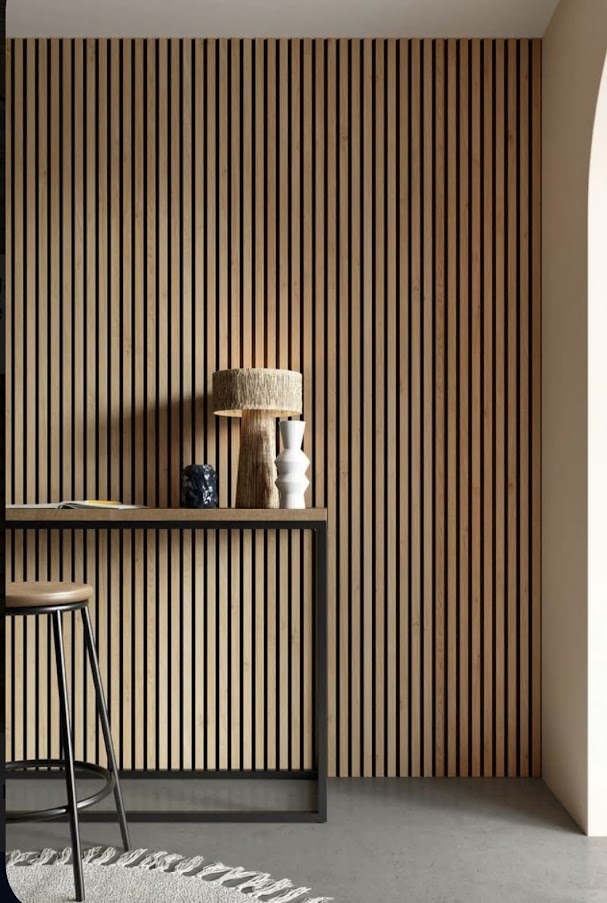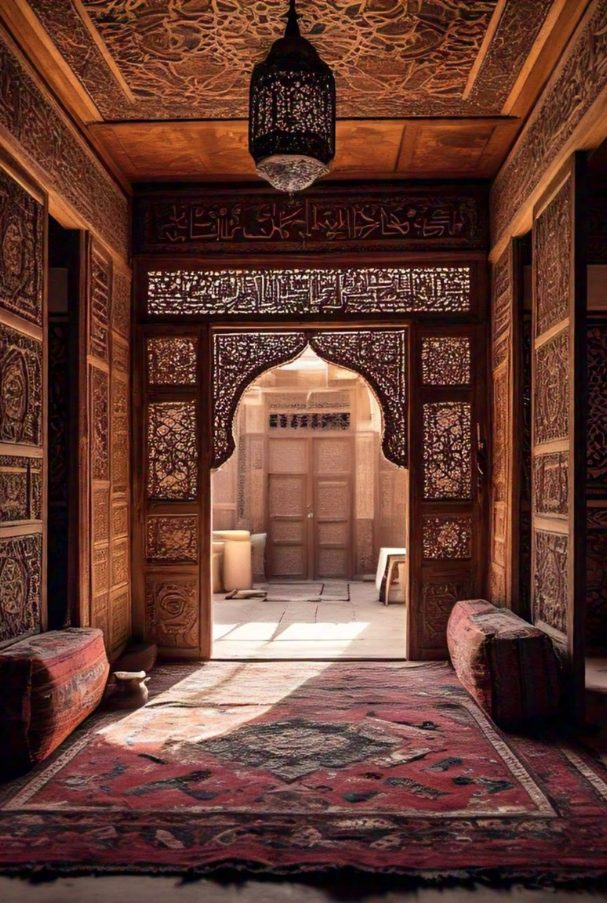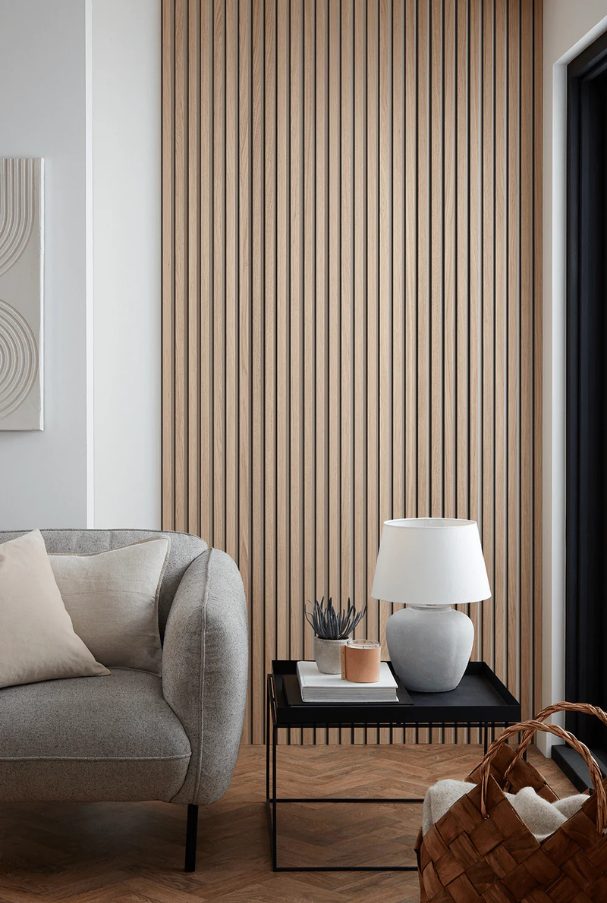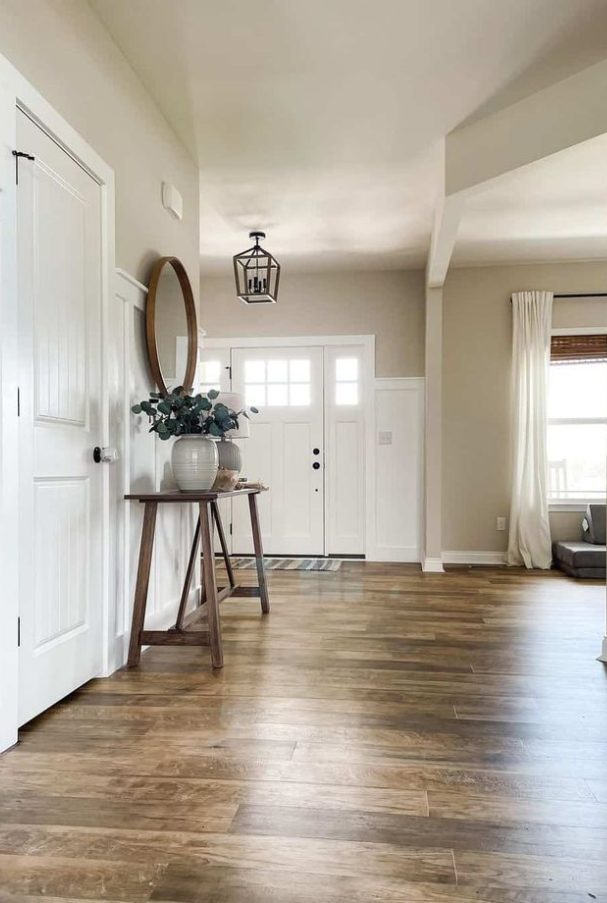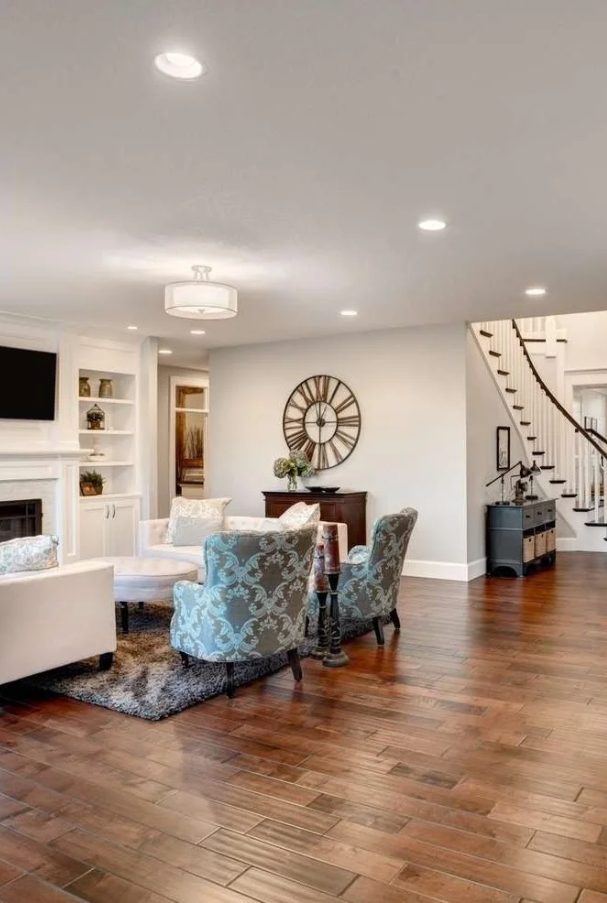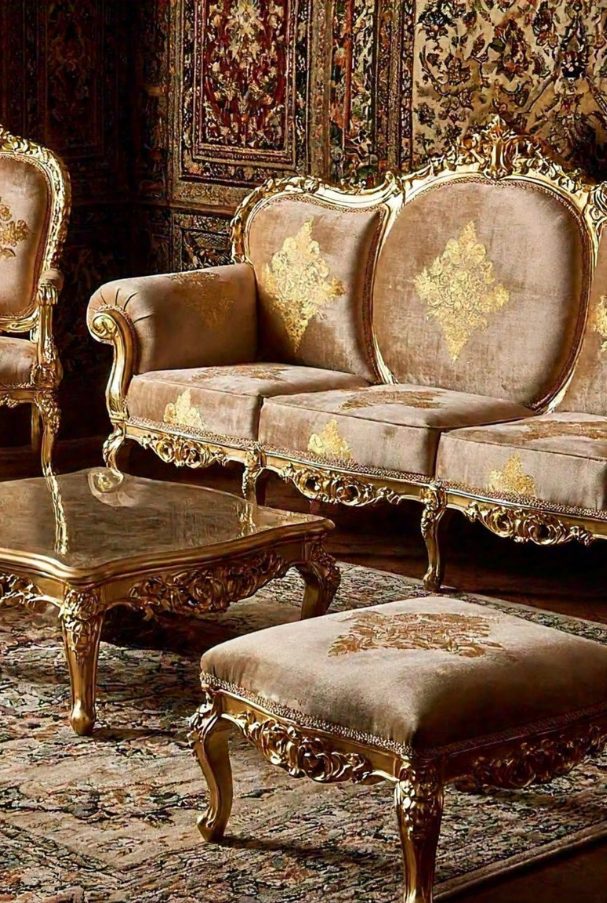Modern Arabic Interior Design Ideas & Style for Your Home
Explore modern Arabic interior design ideas, color palettes, furniture, lighting, and decor styles. Discover how to create an elegant Arabic style house interior.
Interior design styles differ across countries and cultures, each reflecting a unique heritage and identity. Interior spaces often serve as a mirror to a society’s traditions, values, and lifestyle. With globalization bridging the cultural gap, design influences are being shared across borders—allowing you to incorporate global styles into your own house. One such rich and captivating approach is Arabic interior design.
Arabic style interior design is widely embraced across nations such as Morocco, Jordan, Egypt, Iraq, Kuwait, Algeria, Saudi Arabia, Sudan, and the United Arab Emirates (UAE). Deeply rooted in history, this design style reflects the influence of ancient civilizations. For example, the iconic arches and columns trace back to Roman architectural elements adopted by Islamic culture. A modern-day representation of this is the breathtaking Sheikh Zayed Grand Mosque in Abu Dhabi.
If you’re looking for arabic interior design ideas that blends luxury, detail, and cultural charm, modern Arabic interior design offers a wealth of ideas. Known for its extravagant aesthetics and finely crafted elements, this style transforms homes with elegance and authenticity. One of the most prominent examples of Arabic home interior design is the world-renowned Burj Al Arab hotel in Dubai—a space that beautifully showcases opulent furniture, intricate decor, and hallmark design features of Arabic style interiors.
The Arabic interior design style is known for its elegance, richness, and attention to intricate details. Rooted in cultural heritage and enhanced by modern influences, this style creates spaces that are both luxurious and inviting. Below are some of the hallmark features that define Arabic house interior design today:
Modern Arabic interior design combines traditional Islamic, Moroccan, and Mediterranean styles with hints of contemporary minimalism and transitional modern decor. This unique fusion results in interiors that feel timeless yet current—honoring cultural roots while embracing evolving tastes.
Creating a warm, culturally rich space inspired by Arabic interior design style means blending tradition with thoughtful spatial planning. Whether you’re designing a full home or just a room, these ideas will help you bring the beauty of modern Arabic interior design into your living space. From architectural elements to layout and furnishings, each idea reflects the elegance, warmth, and social spirit deeply rooted in Arab culture. Below are some curated decorating tips and concepts to transform your home with an authentic Arabian interior style touch.

Traditionally, Arabic furniture design leaned toward minimalism—floor cushions, low platforms, and simple benches were the norm, especially in older homes. Instead of tables and chairs, families gathered on woven rugs and served meals on decorative brass or copper trays, reflecting a deep cultural connection to comfort and hospitality.
In modern Arabic home interior design, however, furniture has evolved into a blend of tradition and sophistication. High-profile seating like carved wooden sofas and armchairs are now common, often showcasing intricate geometric or floral patterns. These detailed carvings are more than just decorative—they reflect the region’s rich artistic heritage. Premium pieces may even be inlaid with exotic woods like rosewood, walnut, or lemon wood, and occasionally adorned with mother-of-pearl or decorative stones for a more luxurious touch.
Beyond seating, Arabic style furniture includes signature elements such as hexagonal side tables, ornately carved wooden doors, decorative room dividers, and unique items like Quran boxes and low tea tables. These pieces not only add depth and authenticity to a space but also help preserve the cultural charm that defines Arabic home interiors.
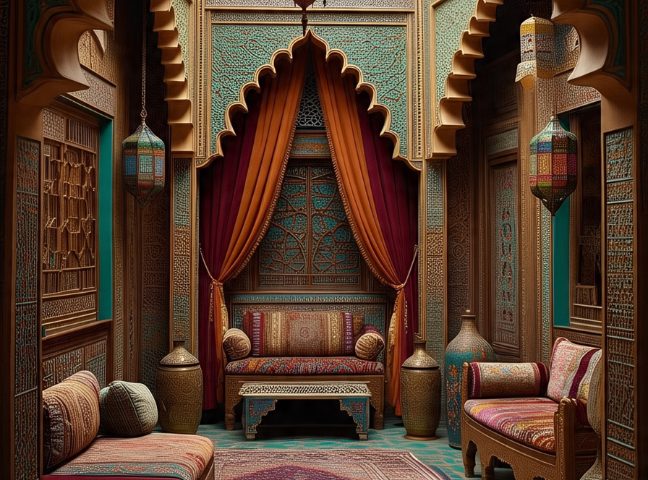
When it comes to Arabic house interior design, color plays a powerful role in setting the tone and mood of the space. Traditional Arabic interiors are known for their warm, vibrant, and opulent color schemes—filled with deep reds, burnt oranges, golden yellows, and earthy tones that evoke a sense of richness and cultural depth. These are often balanced with cooler accents like emerald green, turquoise, and sapphire blue to bring harmony and freshness to the space.
To embrace the essence of modern Arabic interior design, consider starting with warm neutral walls—think sand, terracotta, or camel shades—and layering in bold accent tones. An eye-catching burnt orange or Moroccan red feature wall can instantly add life and cultural flair to your living area. Many modern interiors also incorporate textured finishes on walls using decorative paint techniques or rich wallpapers that give a tactile, luxurious feel.
But the color story doesn’t end with the walls. Rich hues are carried throughout the décor with colorful Persian rugs, patterned upholstery, embroidered cushions, and lavish curtains. Shades like royal purple, glittering gold, rust, coral, cinnamon, navy, olive, and even curry yellow are all fair game when curating your Arabic interior design style. These hues create depth, warmth, and vibrancy—perfectly capturing the essence of a modern Arab-inspired home.
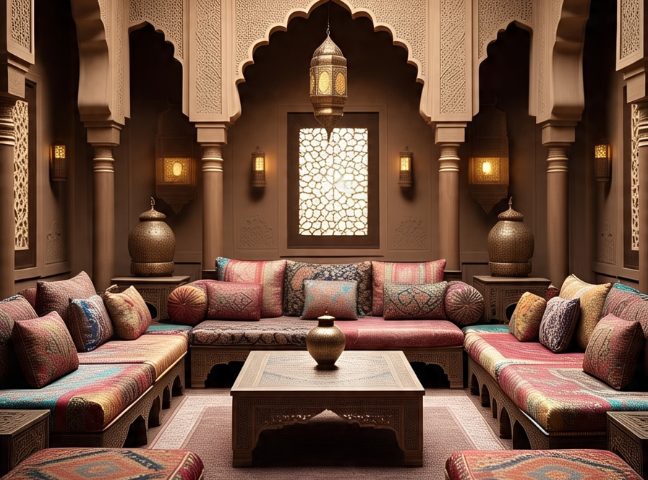
In Arab culture, the family unit holds deep significance, and home interiors often reflect that connection. The living room, or majlis, is considered the heart of the home—a gathering spot for conversations, hospitality, and bonding. Because of this, the space layout in Arabic interior design is focused on creating a warm, inclusive, and comfortable setting.
Furniture should be arranged in a way that promotes easy conversation and connection. Avoid placing seating too far apart, as it can create a sense of formality or isolation. Instead, orient sofas, floor seating, or poufs around a central focal point—commonly a fireplace, ornate coffee table, or television—depending on your family’s traditions.
In modern interpretations, cultural respect for personal space and tranquility is still essential. So while openness is important, so is balance. A well-planned layout supports both privacy and social interaction, which are fundamental to Arabic home interior design principles.

Lighting is more than function in Arabic interior design style—it’s an expression of artistry and ambiance. Decorative lighting, often handcrafted with intricate detailing, plays a central role in bringing the warmth and mystery of Arab aesthetics into your space. From ornate chandeliers to filigree lanterns, every piece serves as a visual statement while casting beautifully diffused light.
The chandelier often acts as the crown jewel in an Arabic living or dining area. For an authentic look, go for one with golden finishes, curved forms, and elaborate embellishments. If your ceiling height allows, choose a grand, oversized fixture to create a bold focal point. To enhance intimacy, consider Arab-style lighting such as perforated metal lanterns. Whether suspended from the ceiling or placed as floor or tabletop décor, these lanterns scatter intricate light patterns across the room—transforming the space into a glowing retreat.
Mood lighting is essential in Arabic home décor, and dimmer switches help adjust the atmosphere as needed. Complement your main fixtures with layered sources like wall sconces, recessed lighting, and ambient glows from hidden cove lights. To top it off, low-set electric candles or LED votives nestled between lanterns add a magical, modern touch—ideal for creating a tranquil, luxurious vibe in bedrooms and living rooms alike.

In Arabic interior design, walls are more than just surfaces—they serve as a canvas for artistry and tradition. Richly patterned Arabic wallpapers can add depth, warmth, and cultural charm to your rooms. However, wall treatments go far beyond paint and paper. Intricate Arabesque wall shelves or latticework panels are often used not only for visual appeal but also for practical storage and display.
For a more modern touch that still reflects Arabic elegance, many homes now incorporate gypsum wall designs to create beautiful textures and refined finishes. Whether through geometric carvings, soft wave patterns, or subtle 3D panels, gypsum walls offer a seamless way to merge tradition with contemporary sophistication. These features can serve as elegant backdrops in living rooms, hallways, or even bedrooms, making them a timeless element of Arabic house interior design.

Textiles are the heart of Arabic home interior design, bringing warmth, depth, and unmistakable luxury to every space. Layers of rich fabrics and intricate patterns are key to achieving the opulence this style is known for. Think heavy drapery, handwoven tapestries, richly upholstered furniture, Persian rugs, plush floor cushions, decorative bolsters, and ornate hallway runners—all working together to create a cozy yet majestic ambiance.
The secret to creating a truly lavish atmosphere lies in the use of luxurious fabrics like shimmering silk, velvet, satin, and cashmere. To elevate the aesthetic further, intricate trimmings, tasseled tiebacks, and embellished pillow edges introduce even more visual interest. Wool rugs with traditional patterns ground the look, while window treatments—such as cascading drapes, swags, jabots, and detailed pelmets—infuse the room with elegance. A great example of this style can be seen in Al Seef Heritage Hotel in Dubai, where traditional Emirati charm blends beautifully with rich textile elements and modern comforts.
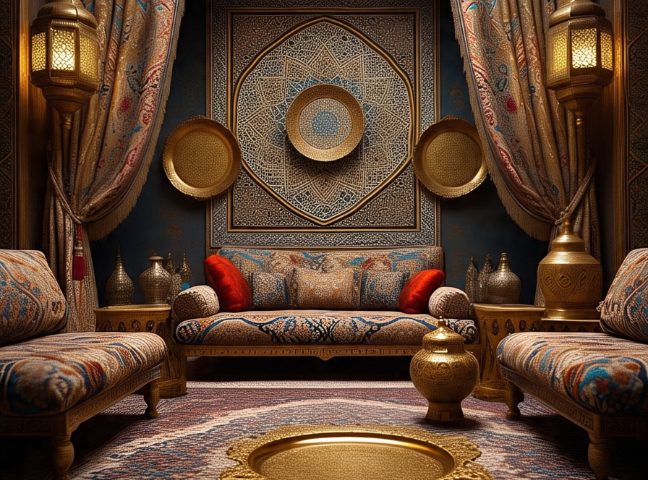
When it comes to Arabic interior design, décor is more than just visual appeal—it’s a celebration of cultural identity. Decorative elements like golden accents, oversized artwork, intricately painted plates, and heavy embroidered curtains bring richness and personality to your space. These pieces don’t just fill empty spaces; they define the entire mood and essence of an Arabic-style home interior.
A defining feature of Arabic decor is the use of graphic tile patterns and Arabesques—repeating geometric or botanical motifs that are deeply rooted in Islamic art. These ornamental elements, often seen on walls, ceilings, or textiles, carry symbolic beauty and symmetry. Arabic calligraphy, stylized plants, and detailed grid patterns are frequently used to create balance and harmony in design.
Decor also includes textiles and accessories with historical significance. From fine, pattern-rich carpets to handcrafted dishes and pitchers, every item tells a story. These pieces aren’t just beautiful—they’re functional and rooted in tradition.
Here are a few timeless decorative elements you can include in your modern Arabic interior design:
By integrating these into your home, you can create a warm, luxurious space that blends culture with contemporary elegance.
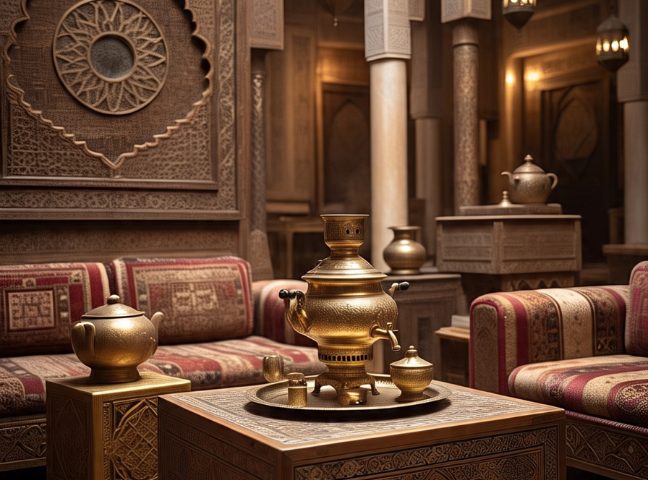
In Arabic interior design, accent pieces are more than decorative—they’re storytelling elements that reflect tradition and heritage. Metals take center stage, with detailed Moroccan samovars, engraved tea sets, and hand-inlaid marquetry often becoming prized focal points. These pieces add richness and depth to the room while paying homage to centuries-old craftsmanship.
You’ll often find metal or carved wooden chests used as coffee tables or storage, alongside brass or hammered metal side tables, ornate mirrors, and upholstered benches. These accents help layer texture and charm into any space, balancing opulence with cultural expression. To make your interiors truly reflect modern Arabic interior design, consider blending traditional accents with subtle modern touches.
Here are a few unique accent ideas that elevate the Arabic aesthetic:
These finishing touches not only enhance the visual appeal of your home but also align beautifully with Arabic home interior design trends leading into 2030.
Whether you’re inspired by the grandeur of traditional Arab palaces or the elegance of contemporary villas, modern Arabic interior design offers a timeless way to express luxury, culture, and comfort. By blending rich textures, ornate detailing, and thoughtful spatial planning, you can create a home that not only looks beautiful but also feels deeply personal and rooted in heritage. Embrace these Arabic interior design ideas to transform your home into a refined, peaceful retreat that honors both tradition and modern living.
Explore modern Arabic interior design ideas, color palettes, furniture, lighting, and decor styles. Discover how to create an elegant Arabic style house interior.
Explore the list of top 10 interior design companies in Qatar. From residential spaces to commercial designs, discover the best interior designers in Qatar Doha
Explore the list of top 10 interior design companies in Qatar. From residential spaces to commercial designs, discover the best interior designers in Qatar Doha
